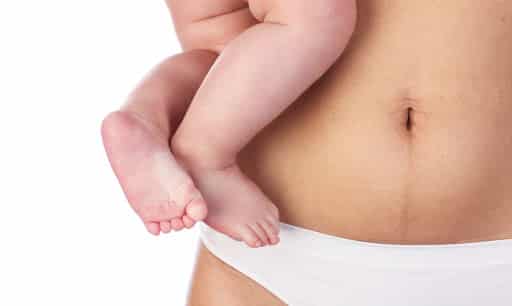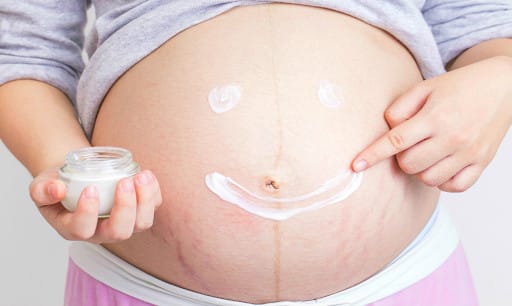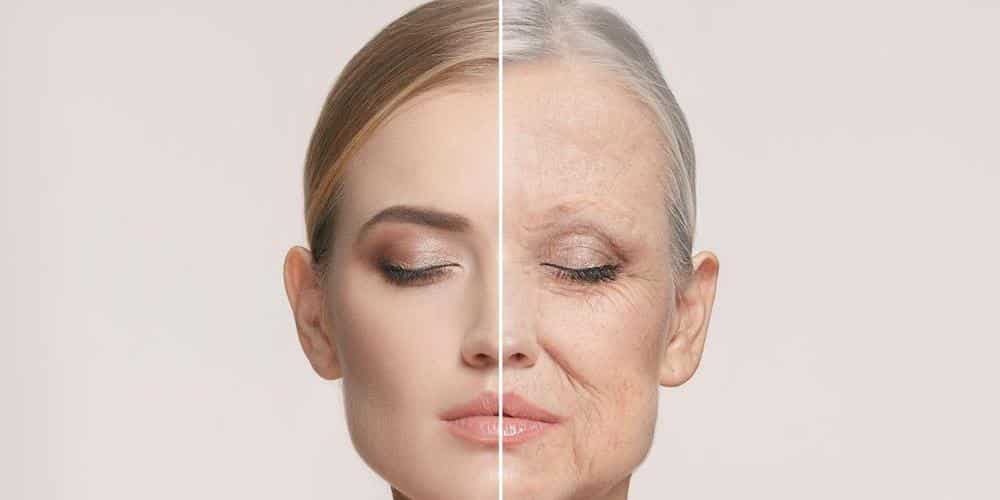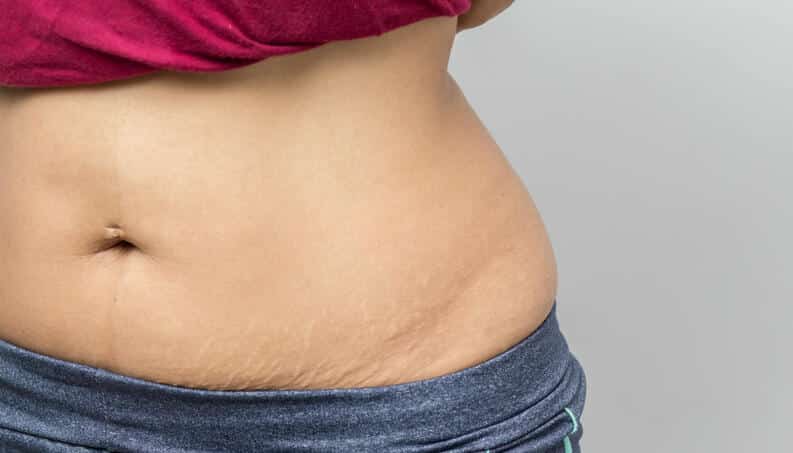Postpartum sagging is an inconvenience suffered by many women. However, it is possible to avoid most of its effects by changing some habits.
Sagging is a normal occurrence in anyone’s life, especially postpartum. Because the body goes through several changes during pregnancy, such as the belly growing to accommodate the baby, it is normal for the skin and muscles to stretch. This occurs after weight gain, as well as an increase in body volume. After the birth of the baby, little by little the body returns to what it was before. However, there are cases where the skin remains tight in areas such as the belly. This is the well-known postpartum sagging.
There is also the case that older women who go through pregnancy are more likely to suffer from postpartum sagging than younger women. In this case, the condition of abdominal diastasis, which consists of the separation of the abdominal muscles and the connective tissue in the region, is also combined with the natural aging of the skin. In addition to causing discomfort, the problem can also greatly affect women’s self-esteem.
Either way, postpartum sagging has a solution. By combining different types of care with your routine after pregnancy, it is possible to recover your old appearance or even improve it. So, check out everything you need to know about postpartum sagging below. Also take the opportunity to discover the main reasons, how to avoid them and what to do to reverse the problem.
Postpartum sagging

The first signs that sagging will appear are easy to recognize. Normally, the belly tends to fall over the panties or the skin wrinkles. However, its occurrence is essential for pregnancy. The process is extremely natural for the body, as the uterus needs space to grow. Therefore, there is no way to prevent postpartum sagging, but rather to alleviate its effects in the best possible way. Physical exercises to maintain tone, for example, are a great way to start.
Furthermore, for those who are concerned about the appearance of their skin after pregnancy, adopting certain precautions during pregnancy is a great way to not suffer so much with the result. Pregnant women need to invest in a balanced diet, pay attention to their weight and drink lots of water. In this sense, it is not only the growth of the uterus that can cause the rupture of the skin’s elastic fibers, but also weight gain due to lack of health care.
During pregnancy, it is also possible to perform low and medium impact exercises to maintain health and help the body adapt to changes. Finally, care must be intensified during the last month of pregnancy. This is done using obstetrician-approved topical products that help tone the skin and reduce its relaxation.
Main reasons for postpartum sagging
Although the situation is natural and difficult to avoid, there are other reasons that intensify the sagging appearance of postpartum skin. Typically, they are related to bad habits during life and pregnancy, both food and health in general.
1 – Little skin hydration

Hydration is essential so that sagging is not so aggressive. Rapid weight loss after pregnancy leads to increased production of free radicals, something that damages collagen. Thus, increased skin distension occurs. In order for the collagen and elastin fibers to withstand the dermis stretching so drastically, it must be constantly hydrated.
2 – Unbalanced diet

A diet rich in sugar and processed foods is another of the reasons that most cause sagging. Typically, going on restrictive diets and not eating enough protein contributes to the loss of collagen, essential for skin elasticity. Likewise, when a lot of sugar is consumed, the element promotes glycation in the body, where carbohydrates such as glucose bind permanently and damage proteins such as collagen.
3 – Bad habits in general

Smoking cigarettes, consuming excessive alcohol and taking a lot of sun also help with the appearance of postpartum sagging. Such factors, after all, are responsible for accelerating the loss of collagen in the skin. Alcoholic drinks are loaded with sugar, which is one of the biggest enemies of good-looking skin. Exposure to the sun, in turn, destroys collagen fibers through solar elastosis, which leaves the skin thinner and with dilated pores and vessels. In the case of smoking, anyone who smokes is automatically susceptible to premature aging.
4 – Natural loss of collagen

In the case of an older pregnancy, it is normal for the pregnant woman to be susceptible to the natural loss of collagen and elastin due to aging. After the age of 25, the body’s production of collagen and elastin decreases significantly, which contributes to the appearance of sagging, wrinkles and fine lines.
Tips to avoid postpartum sagging
Even though most of the changes that occur during pregnancy are aggressive, the body is still perfectly prepared to return to what it was before. With time and patience, it is possible to introduce a new care routine and get back in shape without much difficulty.
1 – Moisturizes the skin

Even during pregnancy, one of the most important parts of helping to avoid postpartum sagging is hydrating your skin. The habit can prevent the appearance of deep stretch marks, as well as reduce irritation and the itching sensation caused by dry skin. In the bath, for example, you can use oils such as almond or grape seed, rinse quickly and dry gently with a towel.
2 – Practice physical exercise

After a natural birth, physical exercise will be permitted after 2 or 3 weeks. In the case of a cesarean section, 4 to 6 weeks. It is important to remember that abdominal efforts should be avoided by women who have had cesarean sections. At first, just pushing the baby stroller on walks is a great help. Afterwards, it will be possible to move on to a treadmill or exercise bike, according to medical recommendations.
Yoga classes, for example, are a great option to strengthen your belly muscles. The different positions tone the body and help the organs return to their original locations.
3 – Drink water and eat well

It is essential to drink approximately 3 liters of water per day to stimulate kidney function and eliminate fluid retention. Furthermore, for those who are still breastfeeding, drinking water is important to produce milk. In this sense, breastfeeding is also a great way to lose weight. It is estimated that it is possible to lose around 750 calories per day this way.
Likewise, eating well before, during and after pregnancy helps you maintain your ideal weight and also avoid thousands of other problems related to an unbalanced diet. During pregnancy, for example, consuming 300 calories more than expected per day is already a good idea. As for cravings, filling the fridge with fruits and vegetables instead of junk food helps control cravings.
4 – Take other treatments for sagging

If necessary, treatments such as lymphatic drainage can help a lot. Drainage stimulates circulation, reducing fluid retention, as well as reducing swelling, especially in the abdomen. There are also other more specific aesthetic treatments that can be applied if stretch marks are very bothersome. The appearance of the skin should improve, although it will not completely eliminate the lines.
If you are interested in this article about postpartum sagging, take the opportunity to check out Spots during pregnancy – Causes, treatments and prevention
Sources: Bebê Abril, Pais e Filhos, Mustela, Metrópoles
Images: Vix, Steelfit, Blog Grão de Gente, Drogaria Santo Remédio, Deposit Photos, Costa Norte, Mobraz, Vecteezy, Kaliandra, Studio Carolina Oliveira

Sign up for our newsletter and stay up to date with exclusive news
that can transform your routine!
Warning: Undefined array key "title" in /home/storelat/public_html/wp-content/plugins/link-whisper-premium/templates/frontend/related-posts.php on line 12
Warning: Undefined array key "title_tag" in /home/storelat/public_html/wp-content/plugins/link-whisper-premium/templates/frontend/related-posts.php on line 13




